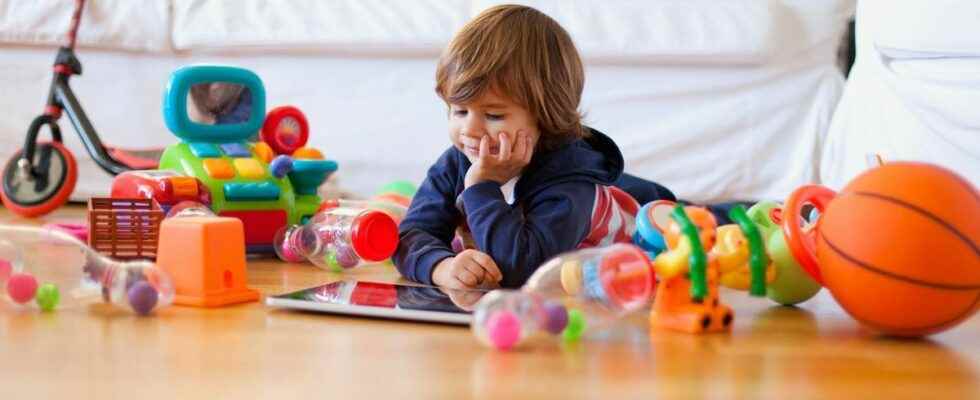Published ,
Reading 2 mins.
Endocrine disruptors, heavy metals… Thousands of chemical substances could be banned by 2030 in toys, clothing, furniture and food packaging.
They are everywhere but they are harmful to our health: these carcinogenic chemical substances – which are found in mattresses, clothing, toys, cosmetics or even food packaging – contaminate our daily lives. Big news: by 2030, entire families of substances classified as carcinogenic, mutagenic or toxic are on the way to being banned by the European Union.
A “healthy” environment for 2030
After multiple postponements, due in particular to the resistance of manufacturers, the European Commission published on Monday April 25 a vast program to eliminate thousands of dangerous products. Six families of toxic substances examined by Echa (European Chemicals Agency) are particularly targeted.
This is the group of PVCs (polyvinyl chlorides), carcinogenic plastics found in a wide range of products (adhesive tapes, toys, food films, car seats, shoes, textiles, etc.), as well as their additives (phthalates, PFAS, etc.), the harmful effects of which mainly concern fertility, the development of the foetus, cancers or obesity.
Many of them, such as PFAS, present in food packaging (especially fast food), break down very slowly and accumulate in the environment and in the body, including the liver (with risk of liver disease). PFAS can even be found in drinking water and human blood, according to a recent study by researchers at USC’s Keck School of Medicine.
Also targeted are flame retardants (clothing, mattresses, etc.), bisphenols, endocrine disruptors used in the manufacture of baby bottles, canned food and receipts; and substances classified as carcinogenic, mutagenic or toxic for reproduction (CMR) in articles for children.
“These restrictions aim to reduce the exposure of people and the environment to some of the most dangerous chemicals by targeting a wide range of uses, industrial, professional and in consumer products.commented the European Commissioner for the Environment, Virginijus Sinkevicius.
The plan anticipates a ban within two years and complete in 2030.
A ban valid for imported products
French toxic substances will not be the only ones concerned. The European Commission also wants to ban imported chemicals.
“It is really important that the Commission stay the course (…) to protect people and the environment“, says Élise Vitali, policy officer for chemicals at the European Environmental Bureau, who fears pressure from lobbies.
According to Eurostat, the statistical office of the EU, every year in Europe, 300 million tonnes of chemical substances are produced.
Among them, there are several families of plastics, listed from 1 to 7. Some are more dangerous than others:
“The most potentially toxic are polyethylene terephthalate (PETE), polyvinyl chloride (PVC), polypropylene (PP), polystyrene (PS) and polycarbonate (PC), which correspond to numbers 1, 3, 5, 6 respectively. and 7″says Dr. Pierre Souvet, cardiologist, to RTBF.
If the plastic is heated (microwave food tray) or if the contact time of the plastic with the liquid or the food is long (water bottle), the health risks are multiplied.
To minimize the harmful effects, it is recommended to decant the food or liquids as soon as possible into containers made of inert material such as glass.
